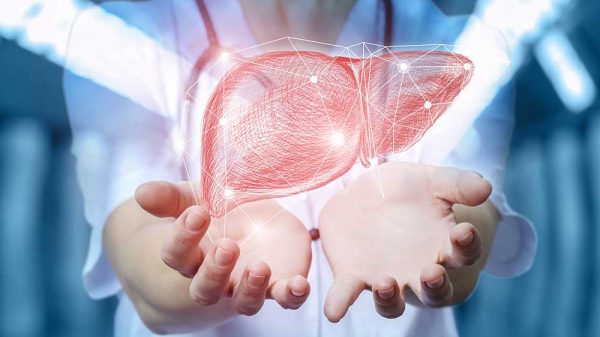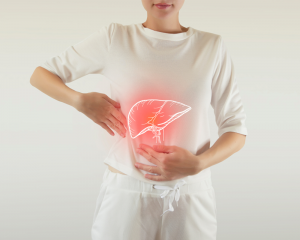Abdominal ascites occur when there is fluid accumulation within the abdomen. This accumulation results in swelling that typically develops over the following weeks, although there are cases where it happened within days. This fluid accumulates between two layers of the abdomen that forms the peritoneum. The peritoneum is a sac that holds the organs of the body, and this peritoneum cavity always has a little quantity of fluid. Ascites only serve as a signal for an underlying cause. It makes a person uncomfortable and can lead to tiredness, nausea, bloating, and shortness of breath.
Liver disease has been identified as being a very common causative factor of ascites. Heart failure and cancer can also cause ascites. Ascites come with weight gain and abdominal swelling. The outlook or prognosis of ascites is dependent on its underlying condition. Progression of this symptom can be followed by regularly monitoring the patient’s weight and abdominal girth.
Causes of Abdominal Ascites
Several possible underlying conditions may result in ascites, and they include kidney disease, inefficient thyroid, tuberculosis, and pancreatitis. The primary reason for ascites is cirrhosis, cancer, and heart failure.
Ascites may happen if the following organs are affected by cancer; liver, peritoneum, ovaries, bowel, breast, lung, lymphatic system, bowel, womb, and lung.
Symptoms
Ascites may be very painful and can cause feelings of nausea, less appetite, shortness of breath, tiredness, constipation, and urine urgency.
When fluids are retained, the pressure on the internal organs is heightened. That often leads to a feeling of discomfort. Ascites can also cause back and abdominal pain, bloating, and difficulty in moving or sitting.
Treatment Options
Treatment to be given will be decided after the doctor has successfully found out a cause.
If cirrhosis was the cause of ascites, then the individual needs to reduce salt intake and use diuretics (water tablets). These tablets permit frequent passage of urine and can prevent more fluid retention. While this approach is an effective one there are some types of cases of ascites that are diuretic resistant.
Doctors may opt for a transplant of the liver if the case is severe. Other possible treatment includes;
Paracentesis
It is useful mostly in cases that have shown to be resistant or if the excess fluid is significant. Paracentesis is a management technique and an effective one at that. It involves the insertion of a syringe into the abdomen to drain away all the excess fluid. The goal here is to ease the abdomen pressure for a less feeling of discomfort.
Shunts
Cancer-related ascites may require a shunt treatment. It involves the use of a tube (shunt) to drain excess fluid into the bloodstream. The doctor uses a needle in the neck vein and then places the shunt just along the wall of the chest.
The shunt serves as a connection between the neck and the abdominal cavity. It goes into the vein from the neck. The fluid is transported within the tube, and the abdomen fluid is drained into the vein (bloodstream).
Chemotherapy
It may be administered via an abdomen tube, which can prevent fluid from accumulating. Unfortunately, not much evidence is available to prove the efficiency of this treatment technique.
Diagnosis
The first method of diagnosis is usually an abdominal examination. A physician will observe the abdomen while the patient is standing up and lying down. The shape of the abdomen indicates if there is fluid accumulation.
Once it is confirmed that the person has abdominal ascites then the next step is to find out what caused it, this will serve as a guide in administering treatment.
The physician will request more tests including:
- Blood test: Blood test assesses the kidney and liver function. If this test confirms the presence of cirrhosis, then more tests will be done to ascertain its cause. Hepatitis B and C antibody tests are brought in at this point.
- Analysis of fluid sample: The abdominal fluid sample may reveal cancer cells present during infection. The doctor removes some fluid using a syringe and sends it for analysis of the laboratory.
- Abdominal ultrasound: What causes ascites may be identified using this test as it shows if the patient had liver cancer.
If the cause is not identified after the ultrasound, then your doctor may ask that you go for an MRI scan.
X-rays also act as good diagnostic tools and can confirm if there is an accumulation of fluid or if there is cancer in the lung. X-rays also detect heart failure.
Outlook
The outlook and prognosis of ascites rely upon the underlying situation. Symptoms may be reduced and managed, but the outcome can be determined by ascites treatment.
Presently there is no satisfactory method for its treatment for cirrhosis patients and also for the diuretic resistant form.
Shunts and paracentesis without translation liver may improve the symptoms, but they are not known for significantly improving life expectancy in the long term.
Early diagnosis of abdominal ascites can be helpful. It could help the health care team to attend to the cause before it progresses. These are parts of the reasons why people are advised to go for a regular check-up.
As soon as you notice anything unusual happening in your body, see your doctor immediately. Watch your lifestyle, diet, habits, and exercise to improve your overall health.























